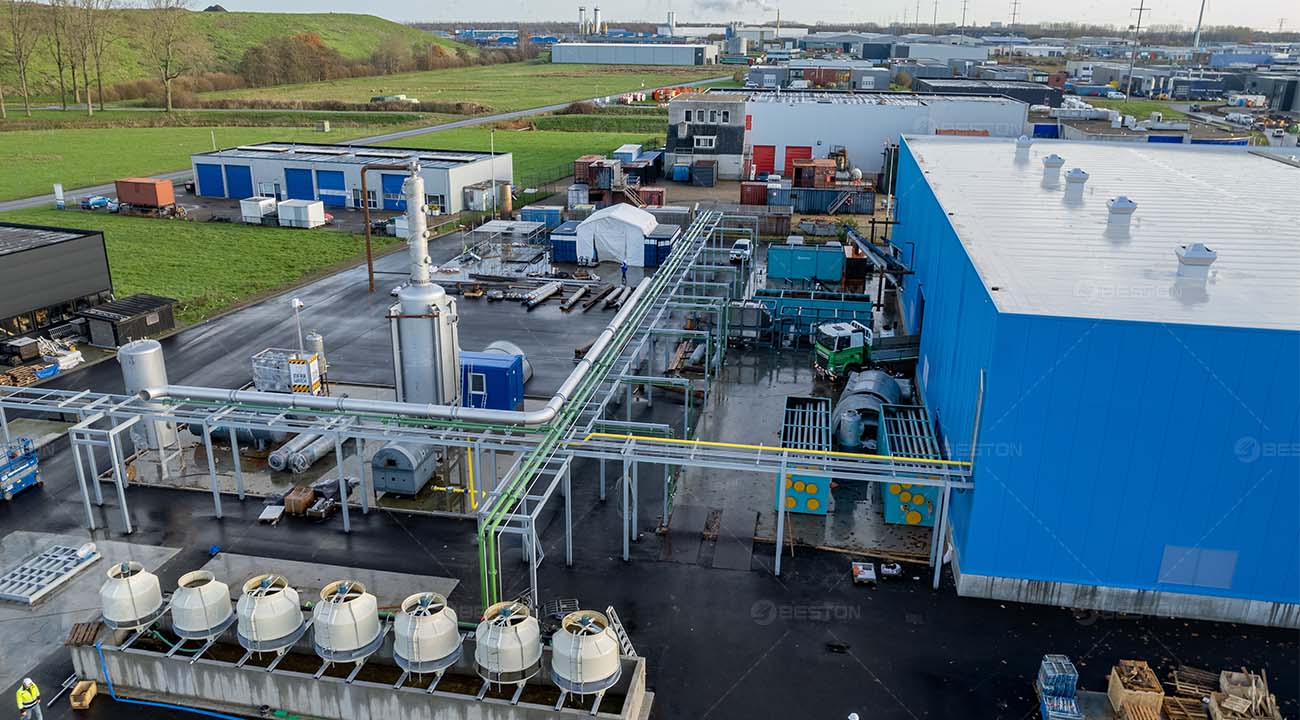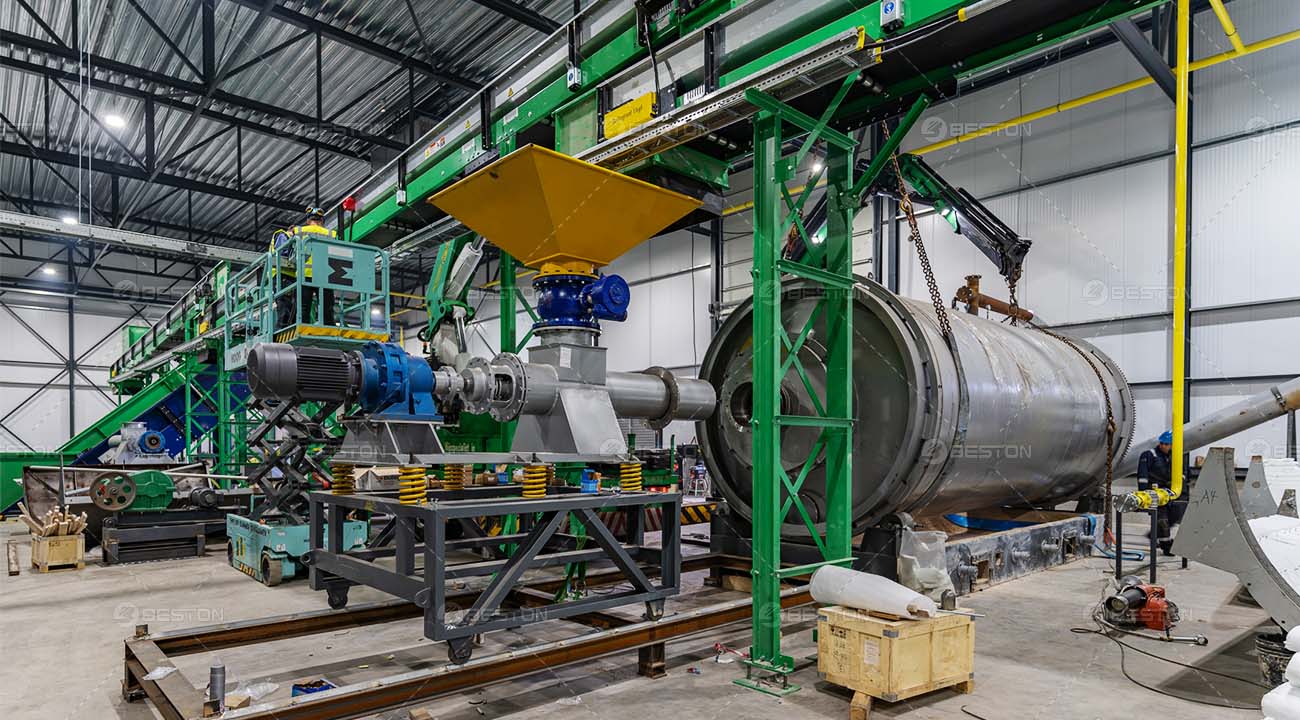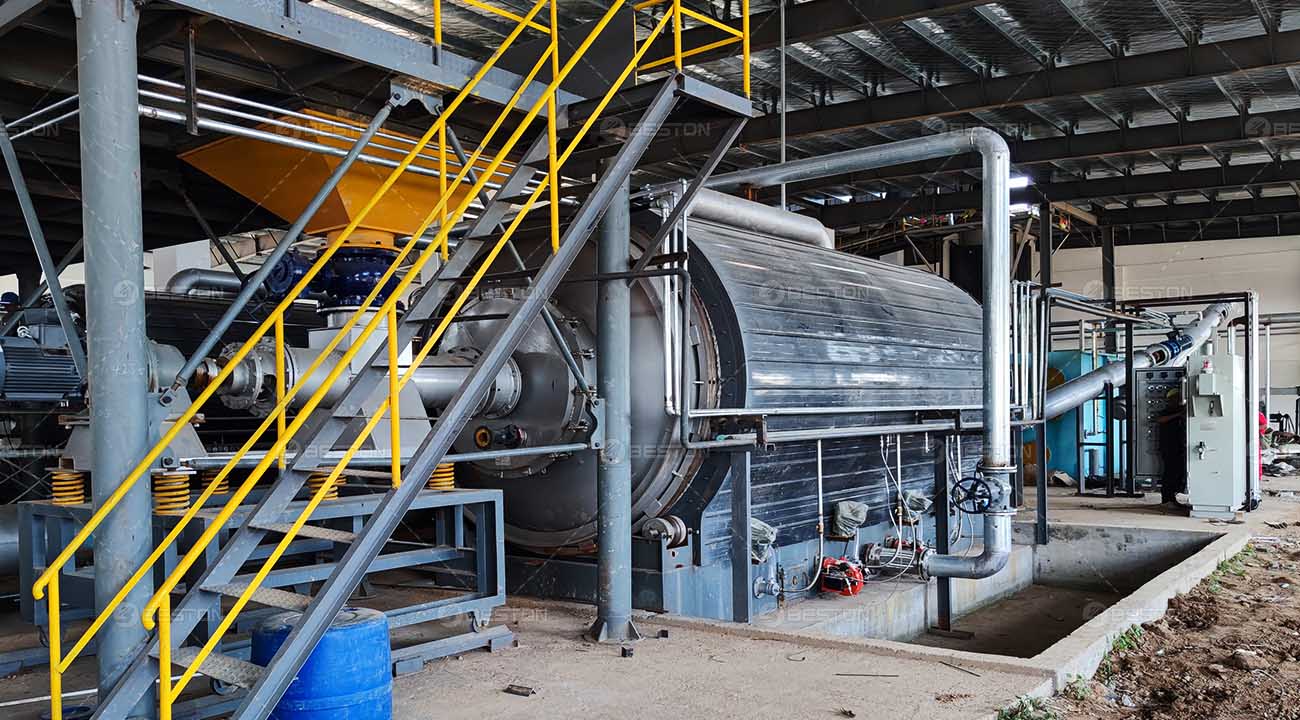The expansion of the tyre pyrolysis industry presents a significant economic opportunity for African countries. As waste management issues continue to rise due to the increase in vehicle usage, establishing a robust tyre pyrolysis plant offers a sustainable solution for waste tyres. Beyond addressing the environmental challenges posed by waste, the economic benefits of investing in tyre pyrolysis projects are substantial.

Addressing Africa’s Growing Tyre Waste Problem
Africa is experiencing rapid urbanization and a growing automotive sector, which has led to an increase in tyre waste. Disposing of these tyres in landfills or through uncontrolled burning not only harms the environment but also poses significant health risks. A Beston tyre pyrolysis plant provides a viable alternative for processing waste tyres into valuable by-products like fuel oil, carbon black, and steel wire. This conversion process helps mitigate the waste problem while simultaneously generating economic value.
By introducing advanced pyrolysis technology, African nations can transform the tyre waste management challenge into a profitable venture. The implementation of pyrolysis plants will enable the continent to reduce reliance on importing fuels and other materials, creating a self-sustaining loop for energy recovery and material reuse.
The Financial Benefits of Pyrolysis By-products
One of the major economic drivers of a tyre pyrolysis project is the market value of the by-products. During pyrolysis, waste tyres are subjected to high temperatures in an oxygen-depleted environment, leading to the breakdown of the tyre material into several useful components. These include:
- Fuel oil: Used as a heating fuel or further refined into diesel. With Africa’s growing energy demands, the ability to generate fuel locally represents an important economic incentive.
- Carbon black: A versatile material used in industries such as rubber production, plastics, and construction. Carbon black from pyrolysis can be further processed to meet the specific quality requirements of these industries.
- Steel wire: Extracted during the pyrolysis process and sold to steel recycling companies, reducing the need for raw material extraction.
These by-products provide multiple revenue streams, enhancing the overall financial viability of investing in a tyre pyrolysis plant. If you have any questions about the actual operation of the project, please visit: https://www.bestongroup.com/
Job Creation and Economic Stimulation
The establishment of tyre pyrolysis plants can create numerous employment opportunities in Africa, from plant operation and maintenance to roles in logistics, sales, and distribution. Job creation not only contributes to local economies but also helps improve livelihoods in regions where unemployment rates are high. The construction and operation of pyrolysis plants will require skilled labor, encouraging workforce development and investment in technical training programs.
Moreover, the increased availability of locally produced fuel and materials like carbon black can stimulate other industries, reducing import dependencies and fostering the growth of domestic markets.
Investment Factors and Pyrolysis Reactor Cost
While the economic potential of a tyre pyrolysis project is evident, investors must consider the initial capital outlay required for plant construction and operation. One of the key cost components is the pyrolysis reactor cost. This cost can vary significantly depending on the reactor’s size, automation level, and processing capacity. Higher-quality reactors with advanced automation systems generally offer greater efficiency and lower operational costs in the long term, making them an attractive option despite their higher initial investment.
The cost of the pyrolysis reactor also depends on the level of emissions control it offers. African governments and regulatory bodies are becoming increasingly focused on environmental standards, so investing in equipment that meets or exceeds these standards can prevent potential fines and ensure long-term plant viability.
Additionally, operational expenses such as energy consumption, labor costs, and raw material supply chains need to be factored into the project’s financial model. However, with proper planning and the use of optimized equipment, the operational cost can be reduced, leading to higher profitability.

Government Incentives and Support
Several African nations are offering incentives to businesses that invest in sustainable technologies like tyre pyrolysis. These incentives may include tax breaks, subsidies, and grants aimed at encouraging the development of green industries. The support provided by governments plays a pivotal role in reducing the financial burden of starting a pyrolysis plant, making it a more attractive investment.
Furthermore, the alignment of tyre pyrolysis projects with national and regional waste management strategies can create additional opportunities for collaboration with government agencies. For example, public-private partnerships may emerge to tackle waste tyre management, with governments providing waste collection and investors handling the pyrolysis process.
Long-Term Sustainability and Market Opportunities
The tyre pyrolysis industry in Africa holds immense potential for long-term sustainability. As global demand for green energy and recycled materials continues to grow, African countries that invest in tyre pyrolysis projects are well-positioned to become key suppliers of eco-friendly products. This market shift is being driven by both environmental regulations and consumer preferences for sustainable goods.
Exporting pyrolysis by-products to international markets could further amplify the economic value of rubber pyrolysis plant. High-quality fuel oil and carbon black, for instance, are in demand across multiple industries worldwide, offering African nations a valuable opportunity to tap into global supply chains.

Conclusion
The economic value of a tyre pyrolysis project in Africa is undeniable. By addressing the continent’s growing tyre waste problem, creating multiple revenue streams, and generating employment opportunities, tyre pyrolysis plants offer both financial and environmental benefits. With the right investment in pyrolysis equipment and careful consideration of reactor costs, African nations can harness the full potential of this sustainable technology.
As governments offer support and the demand for green products grows, tyre pyrolysis could become a cornerstone of Africa’s sustainable industrial future.